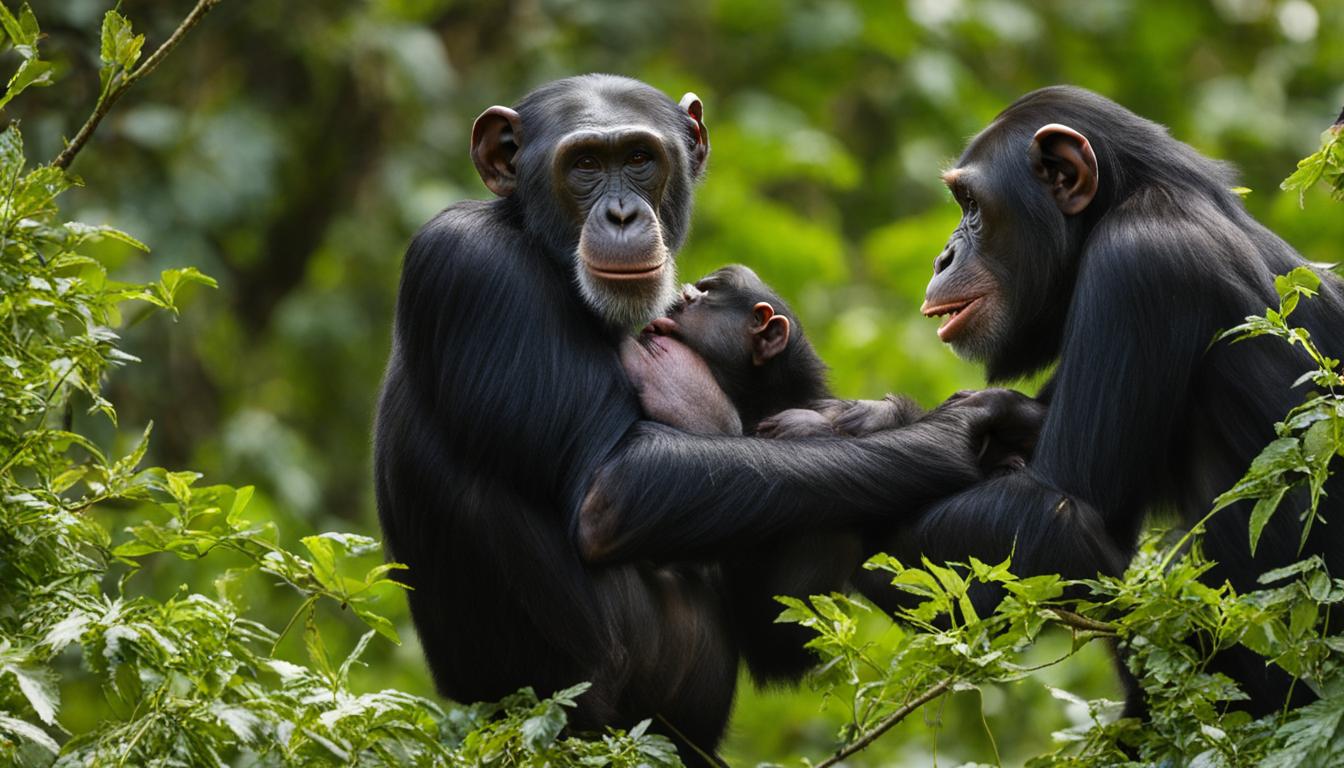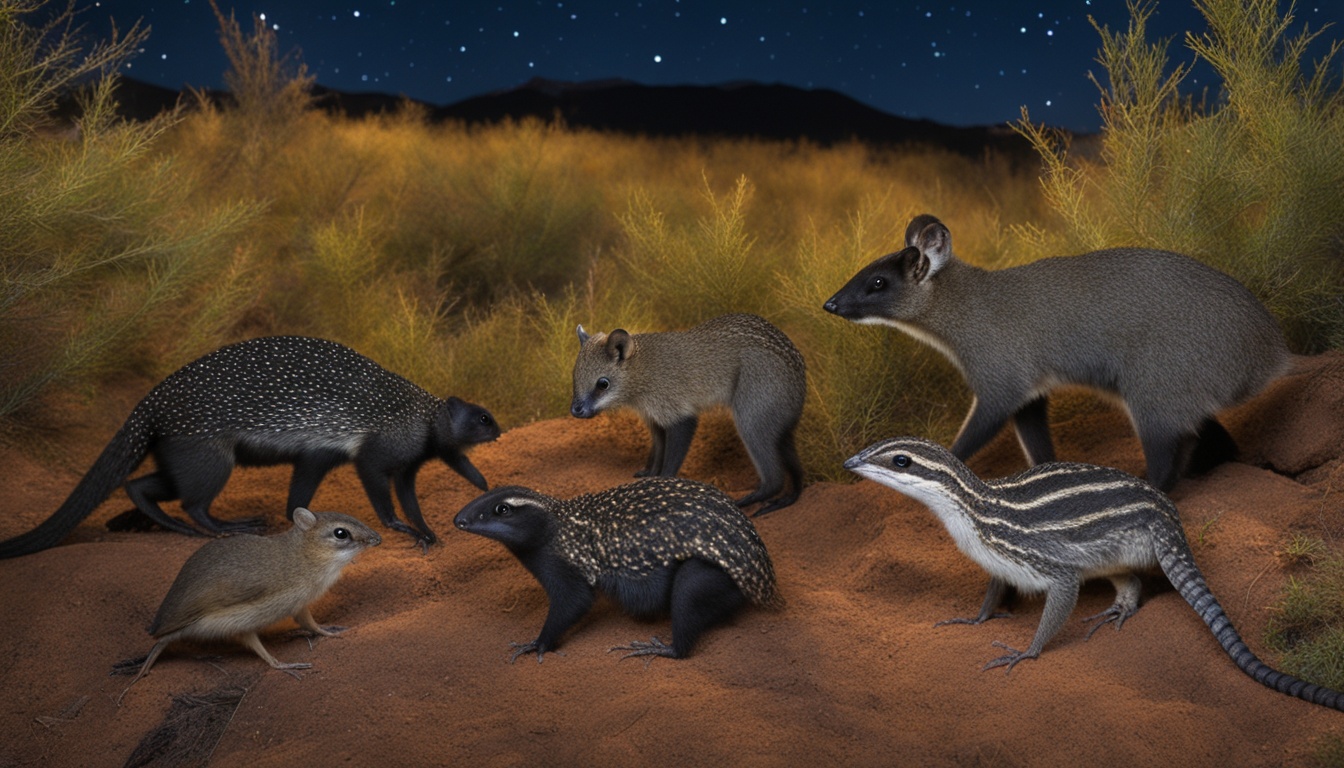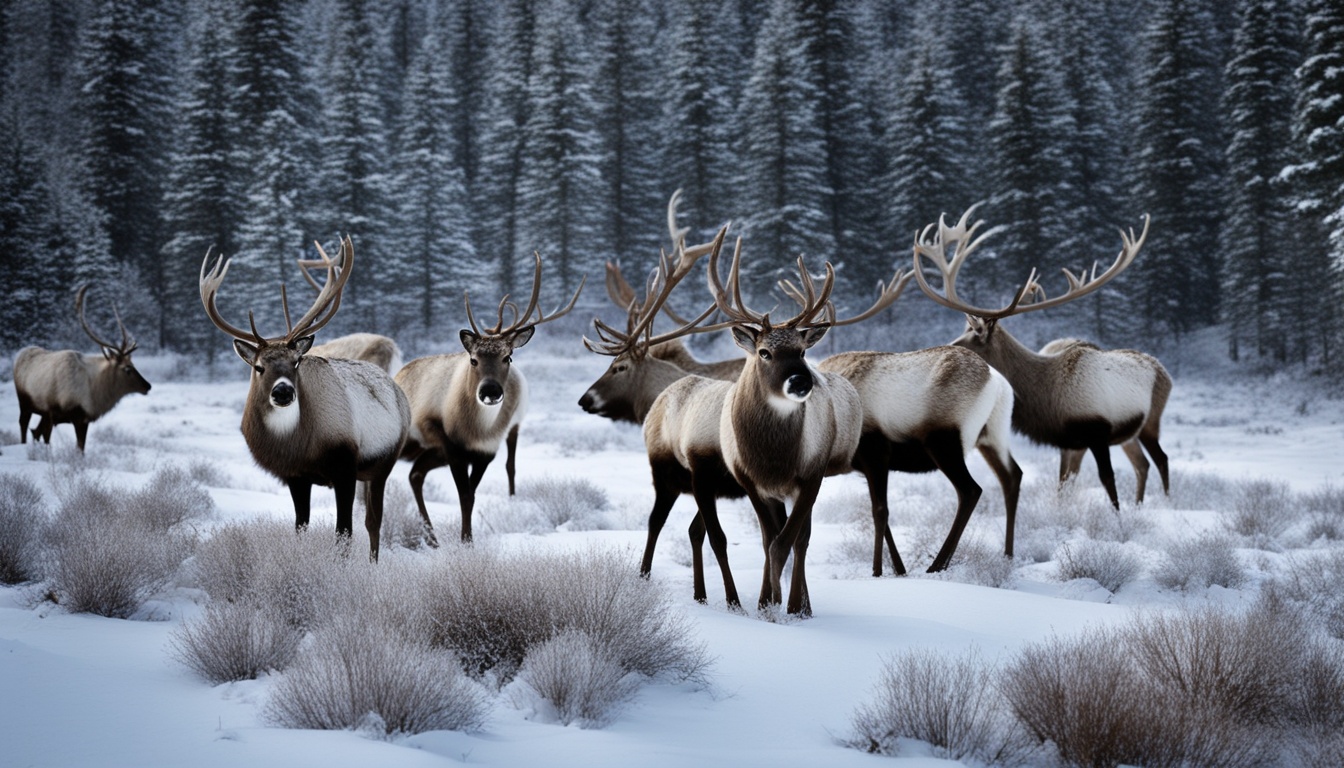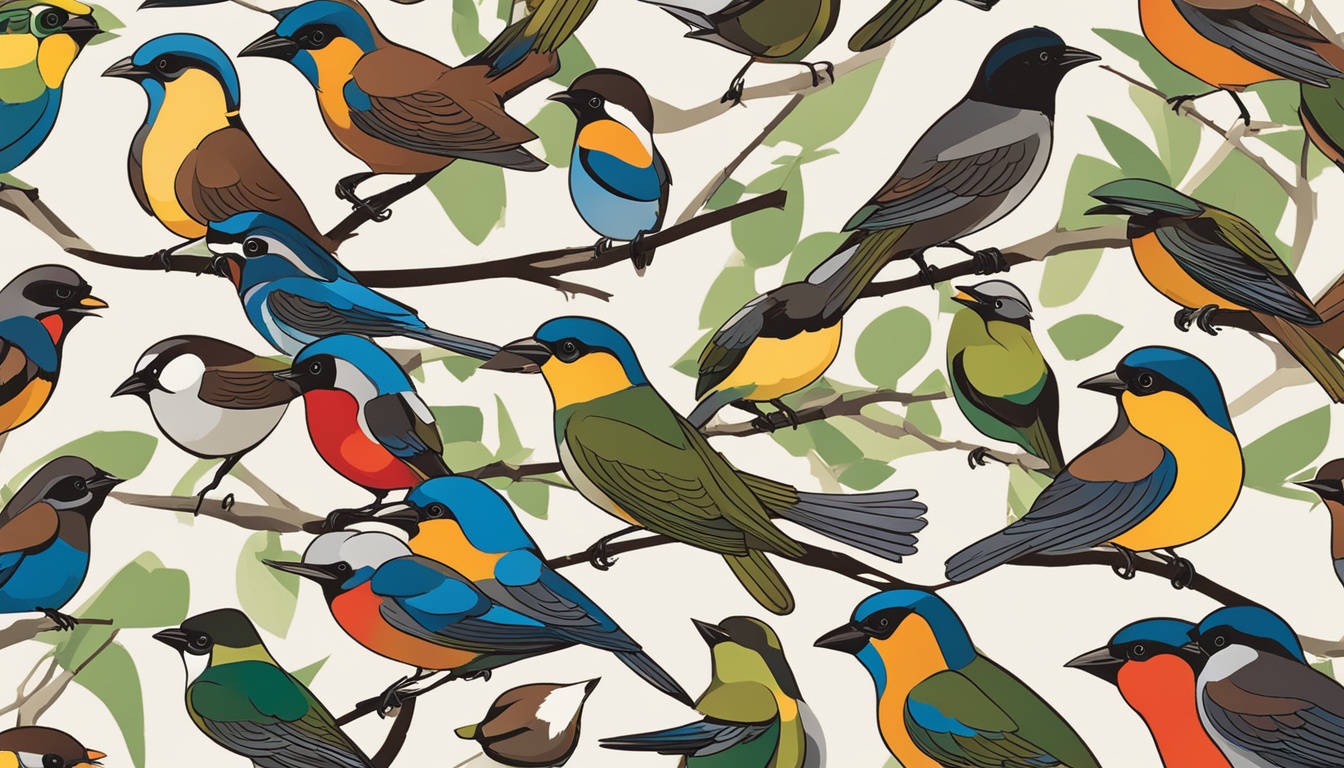Chimpanzees, our closest relatives in the animal kingdom, have fascinating mating and reproductive behaviors. Understanding these behaviors provides insights into the complex world of these intelligent primates. In this article, we will explore chimpanzee reproduction, mating behaviors, breeding in the wild, sexual behavior, and reproductive strategies in the wild.
Chimpanzees are polygynandrous, meaning both males and females have multiple mating partners. Unlike many other animals, chimpanzees do not have a specific mating season. Females can come into estrus at any time of the year, and their genitals swell and change in shape and color during this period. Males may attempt to control sexual access to a tumescent female through aggression, coercion, or consortships.
Female chimpanzees generally give birth to one offspring, sometimes two, following a 230-day gestation period. This prolonged gestation period is comparable to that of humans. Chimpanzees live in a fission-fusion society, where individuals belong to a large community but travel, rest, and eat with smaller groups. This social structure plays a crucial role in their mating and reproductive dynamics.
Chimpanzee Mating Behaviors
Chimpanzees exhibit a variety of mating behaviors that encompass courtship rituals, copulation, and aggression. These behaviors reflect the complex social structure of chimpanzee communities and their reproductive strategies.
During the mating period, female chimpanzees go into estrus, a hormonal phase in their reproductive cycle. Females can form mating consortships with one or more males, separating themselves from the main group and migrating to the fringe for several days. This temporary alliance allows for exclusive mating opportunities.
Mating behaviors among chimpanzees often involve vocalizations, physical displays, and genital swelling. Vocalizations serve as communication signals, attracting potential mating partners and establishing dominance. Physical displays include gestures, postures, and body movements that display fitness and sexual interest. Female chimpanzees exhibit genital swelling during estrus, signaling their receptivity to mating.
To gain sexual access to females, male chimpanzees engage in displays of aggression toward females or competing males. A dominant male may physically intimidate rivals, asserting dominance and securing mating opportunities.
The reproductive anatomy of chimpanzees is similar to humans. Male chimpanzees possess a penis, which is used for copulation. Females have a fully developed uterus and ovaries, enabling them to conceive and give birth to offspring.
| Mating Behaviors | Description |
|---|---|
| Courtship Rituals | Involves vocalizations, physical displays, and genital swelling to attract potential mates. |
| Copulation | Mating through sexual intercourse, facilitated by the male’s penis. |
| Aggression | Male chimpanzees may display aggression towards females or competing males to control mating opportunities. |
Reproductive Strategies in Wild Chimpanzees
Chimpanzees employ various reproductive strategies in the wild to ensure the survival of their species. Unlike many other animals, chimpanzees do not have a specific mating season. Female chimpanzees can come into estrus at any time of the year, meaning that they have the potential to reproduce year-round.
The gestation period for chimpanzees is approximately 230 days. This means that female chimpanzees carry their offspring for almost eight months before giving birth.
Chimpanzees practice polygynandrous mating, where females mate with multiple males, and males mate with multiple females. This mating strategy increases the genetic diversity within the population and ensures a better chance of survival for the chimpanzee species as a whole.
Females may employ different strategies to increase their offspring’s chances of survival. They may choose to mate with high-ranking males who can offer protection and resources for their offspring. By aligning themselves with dominant males, females increase their offspring’s chances of receiving better care and support from the alpha male and the group.
On the other hand, males compete with each other for access to females and the opportunity to father offspring. Male chimpanzees may engage in aggressive behaviors, such as displays of dominance and territoriality, to establish their position and reproductive opportunities within the group.
In summary, chimpanzees exhibit various reproductive strategies in the wild. They reproduce throughout the year, have a relatively long gestation period, and practice polygynandrous mating. These strategies contribute to the preservation and genetic diversity of the chimpanzee population.
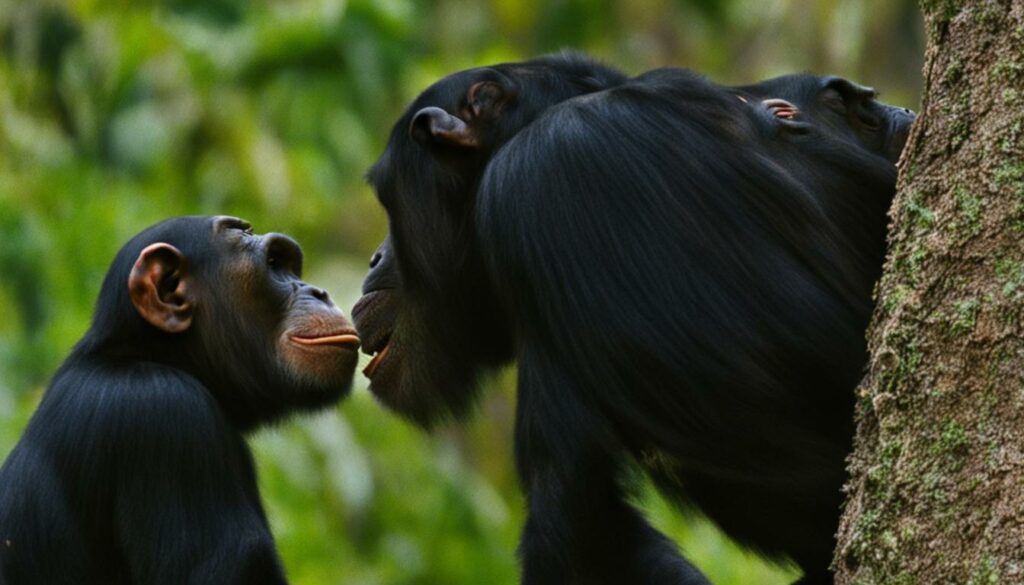
Social Structure and Behavior of Chimpanzees
Chimpanzees live in a complex social structure with a fission-fusion society. They form strong social bonds and maintain long-term relationships. Male chimpanzees often have a dominance hierarchy, with one alpha male leading the group. Aggression, grooming, and physical contact are important in maintaining social relationships among chimps. Relationships between groups can be marked by aggression and violence, including territorial expansion and intergroup encounters. Chimpanzees also exhibit a variety of social behaviors, such as grooming, play, and vocal communication.
Dominance Hierarchy
In chimpanzee social structure, the dominance hierarchy plays a vital role. This hierarchy establishes the social order within a group, with the most dominant individual holding the highest rank. The alpha male usually exhibits dominant behaviors by asserting control over resources, such as food and mates. Other males in the group may display submissive behaviors, such as giving way to the alpha male and avoiding confrontation. This dominance hierarchy helps maintain stability and reduces conflicts within the group.
Social Behaviors
Chimpanzees engage in various social behaviors that serve different purposes within their communities. Grooming, for example, is a common behavior that promotes social bonding and relieves tension within the group. Play is another important social behavior observed in chimpanzees, especially among juveniles. Play serves as a way to learn and practice important skills, establish social relationships, and strengthen bonds with other members of the group.
Grooming and play are crucial for establishing and maintaining social bonds among chimpanzees.
Vocal communication is also a significant aspect of chimpanzee social behavior. Chimpanzees use a variety of vocalizations to convey different messages, including warning calls, location signals, and expressions of aggression or submission. These vocalizations help facilitate group coordination, maintain social cohesion, and contribute to the overall structure of chimpanzee societies.
Chimpanzee Habitat and Range
Chimpanzees are fascinating primates that inhabit various habitats in Africa. They can be found in tropical rainforests, mixed forest-savanna areas, and mountain forests. These intelligent creatures have adapted to their environments and have developed unique behaviors to survive.
Chimpanzees construct nests for resting and sleeping, usually in trees. These nests, made from branches and leaves, provide a safe and comfortable place for them to rest. The ability to make these nests highlights their resourcefulness and adaptability in their habitat.
Chimpanzees have a wide range in Africa, with three recognized subspecies. The first is the Pan troglodytes verus, which is found from Gambia to the Niger River. The second subspecies is Pan troglodytes troglodytes, known to inhabit the area from the Niger River to the Congo River. The third subspecies, Pan troglodytes schweinfurthi, is found in the Democratic Republic of the Congo, Uganda, and Tanzania.
However, chimpanzee populations and their habitats are under threat from various factors. Deforestation, habitat destruction, and human encroachment are major challenges that these incredible animals face. As humans clear forests for agriculture, logging, and infrastructure development, the chimpanzees lose their homes and sources of food. It’s vital that we take action to protect their habitats and ensure the survival of these magnificent creatures in their natural environment.
What Impact Does the Location of Chimpanzees’ Natural Habitat Have on Their Mating and Reproduction Behaviors?
The location of chimpanzees in the wild plays a significant role in their mating and reproduction behaviors. Chimpanzees living in different habitats exhibit varying social structures, mating strategies, and reproductive success. Factors such as food availability, population density, and predator presence can influence their reproductive behaviors in their natural habitat.
What is the mating behavior of chimpanzees in the wild?
Chimpanzee mating behavior in the wild is intricately tied to the chimpanzee reproductive cycle. Females undergo estrus about every 36-40 days, signaling their readiness to mate. Males compete for the attention of estrus females, using displays of power and prowess to gain access to potential mates.

